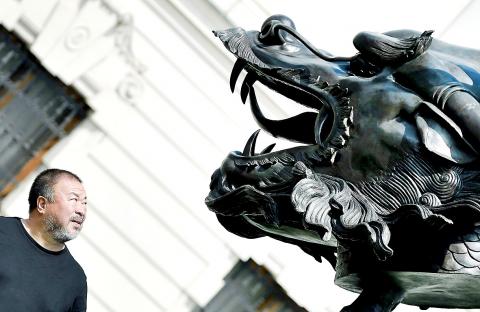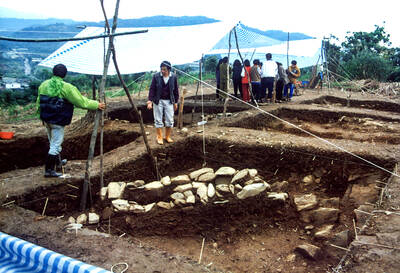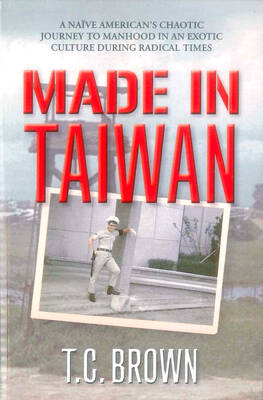On summer days at Princeton University, children splash in a fountain next to an unlikely piece of art: 12 large bronze heads of animals sitting atop poles in a line.
The heads are arrayed between the fountain and the hall of the Woodrow Wilson School of Public and International Affairs. The 10-foot installations range from the mythic (a dragon) to the prosaic (a rabbit and a snake). They are the 12 signs of the Chinese zodiac, and the Chinese tour groups common here in the summer often stop to take photographs. Visitors delight in posing with the animal for their birth year.
The heads were designed around 2010 by the Chinese artist Ai Weiwei (艾未未), a frequent critic of his country’s Communist Party, and are replicas of the famous zodiac heads looted in the sacking of the Old Summer Palace, also known as the Yuanmingyuan, by British and French soldiers in 1860. The originals were part of a water clock and were arranged around a fountain that European Jesuits had designed a century earlier for the court of the Qianlong Emperor.

Photo: AFP / HANS KLAUS TECHT
SYMBOL OF A ‘CENTURY OF HUMILIATION’
Those original heads are now scattered around the world, with a handful kept in Beijing after being bought or recovered from their foreign owners by the state-owned China Poly Group Corp, which has ties to the Chinese military. For many Chinese, the original heads symbolize the “century of humiliation” that China endured at the hands of Western and Japanese invaders starting in the late Qing dynasty.
Ai’s work, called the Circle of Animals/Zodiac Heads, is a commentary on historical memory. The heads, loaded with their own political message, have sat outside Robertson Hall for four years. They are on loan until this December, but the collector who owns them, a Princeton graduate, may extend their stay, said Larry Warsh, a friend of Ai who lives in New York and manages the international tours and exhibitions of the heads.
“The person is a real intellectual and is into the concept of the works being in front of the Woodrow Wilson School specifically,” Warsh said, adding that the collector prefers to remain anonymous. “With all the people who come through those doors on an annual basis, it makes an impact.”
A Princeton Web site says, “Ai complicates conversations about repatriation, shared cultural heritage and contemporary expectations regarding the democratization of art and public space.”
In a recent interview, Ai said he had long been interested in the animal heads and became keenly aware of their political overtones in 2009, when the Chinese government stoked a nationalist uproar over an attempt by Christie’s to auction off two pieces, a rabbit and a rat. They had been part of the estate of French fashion designer Yves Saint Laurent.
The Chinese government, Ai said, used the occasion “to generate some sort of public opinion for propaganda purposes, to gain some kind of national pride or, at the same time, anger about what happened 100 years ago.”
Ai said he wrote a blog post at the time pointing out the flaws in the way that the Communist Party was manipulating history and the reading of the heads. Ai said he found it curious that objects that Europeans had created to ornament a Qing palace were being held up as emblems of China and their recovery framed as a patriotic project.
The Qing dynasty was founded by Manchus who had invaded China from their forested homeland in the northeast and seized the throne in Beijing in 1644 after rebels had already toppled the Ming court. To many Chinese revolutionaries in the late 19th and early 20th centuries, the Manchu rulers were themselves a foreign force to be eliminated as part of China’s transformation into a modern nation.
Ai said he then thought of recreating the heads as public art and placing them at different sites in the West. That, he said, would be “quite an ironic act.”
PATRIOTISM
Jeremiah Jenne, a historian who gives tours of Yuanmingyuan, said the Qing-era “zodiac heads and their association with a particular nationalist or patriotic narrative — ‘century of humiliation’ to the ‘road to rejuvenation’ — are also part of a coordinated curriculum instituted in the wake of 1989,” the year of the Tiananmen Square pro-democracy protests and subsequent government crackdown.
“You don’t see much of this narrative before the 1980s at all,” he said.
There are six editions of Ai’s zodiac heads in bronze and an additional two artist’s proofs. The series at Princeton has been on display at a single site longer than any other bronze set. One set may soon be exhibited at the European Parliament in Brussels, Warsh said.
Ai also made 10 series of golden heads, with two artist’s proofs. These are smaller than their bronze brethren and are often displayed indoors.
The bronze and gold heads have been shown at nearly 40 sites, and together they are Ai’s most viewed work of art.
Last year, a bronze series that was the first one completed, in 2010, sold at auction for 3.4 million British pounds (US$5.4 million) at Phillips in London. It set an auction record for Ai.

Aug. 25 to Aug. 31 Although Mr. Lin (林) had been married to his Japanese wife for a decade, their union was never legally recognized — and even their daughter was officially deemed illegitimate. During the first half of Japanese rule in Taiwan, only marriages between Japanese men and Taiwanese women were valid, unless the Taiwanese husband formally joined a Japanese household. In 1920, Lin took his frustrations directly to the Ministry of Home Affairs: “Since Japan took possession of Taiwan, we have obeyed the government’s directives and committed ourselves to breaking old Qing-era customs. Yet ... our marriages remain unrecognized,

During the Metal Ages, prior to the arrival of the Dutch and Chinese, a great shift took place in indigenous material culture. Glass and agate beads, introduced after 400BC, completely replaced Taiwanese nephrite (jade) as the ornamental materials of choice, anthropologist Liu Jiun-Yu (劉俊昱) of the University of Washington wrote in a 2023 article. He added of the island’s modern indigenous peoples: “They are the descendants of prehistoric Formosans but have no nephrite-using cultures.” Moderns squint at that dynamic era of trade and cultural change through the mutually supporting lenses of later settler-colonialism and imperial power, which treated the indigenous as

An attempt to promote friendship between Japan and countries in Africa has transformed into a xenophobic row about migration after inaccurate media reports suggested the scheme would lead to a “flood of immigrants.” The controversy erupted after the Japan International Cooperation Agency, or JICA, said this month it had designated four Japanese cities as “Africa hometowns” for partner countries in Africa: Mozambique, Nigeria, Ghana and Tanzania. The program, announced at the end of an international conference on African development in Yokohama, will involve personnel exchanges and events to foster closer ties between the four regional Japanese cities — Imabari, Kisarazu, Sanjo and

By 1971, heroin and opium use among US troops fighting in Vietnam had reached epidemic proportions, with 42 percent of American servicemen saying they’d tried opioids at least once and around 20 percent claiming some level of addiction, according to the US Department of Defense. Though heroin use by US troops has been little discussed in the context of Taiwan, these and other drugs — produced in part by rogue Chinese Nationalist Party (KMT) armies then in Thailand and Myanmar — also spread to US military bases on the island, where soldiers were often stoned or high. American military policeman